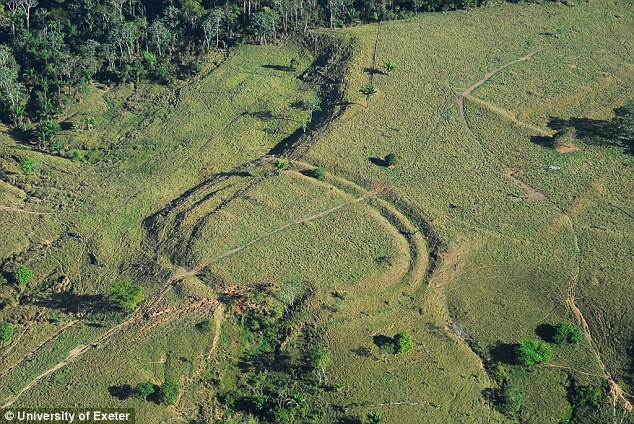Researchers has found hundreds of
mysterious structures built into the Earth more than two thousand years ago
have been discovered in the Amazon rainforest. The truly incredible earthworks
have long remained hidden by trees however; deforestation in recent years has
discovered over 450 massive geoglyphs. Though, the purpose of stone structure
is not known, but believed ditched enclosures were perhaps used sporadically as
ritual gathering places. These ditches resemble to Stonehenge approximately
13,000 square kilometers in the western Brazilian Amazon, thought untouched as
previously believed.
The real phenomena lay hidden for
many centuries underneath mature rainforest actually challenges the idea that
Amazonian forests are pristine ecosystem. The region actually forested when the
geoglyphs were built, or people impacted the landscape to build these
earthworks. Therefore, the researchers reconstructed 6,000 years of vegetation
and fire history around two of the geoglyph sites, enlightening heavy
alterations by ancient humans. The history tells that humans altered the bamboo
forests for millennia, creating small, temporary clearings to build these
mysterious structures. The analyzed “phytoliths” a type of microscopic plant
fossil made of silica.
So, this allowed them to rebuild
the ancient vegetation and charcoal quantities, assess the amount of forest
burning and carbon stable isotopes, and determine how ‘open’ the vegetation
used to be. Moreover, the search exposed that the indigenous people didn’t burn
large tracts of forest, whether for geoglyph construction or agricultural
practices. In its place, they concentrated on economically valuable tree
species, such as palms, transforming their environment in the process to make a
“prehistoric supermarket.” Thus, the biodiversity of few Acre’s remaining
forests may have roots in these ancient ‘agroforestry’ practices, the
researchers say.
So, hence the findings will be
published in the Proceedings of the National Academy of Sciences. Regardless of
the massive number and bulk of geoglyph sites in the region, it can certain
that Acre’s forests were never cleared as broadly, or for as long, as they have
been in recent years. The current evidence that Amazonian forests have been
managed by indigenous peoples long before European contact should not be cited
as justification for the destructive, unmaintainable land-use practiced today.
Moreover it should in its place serve to highlight the ingenuity of past
subsistence regimes that did not lead to forest degradation, and the importance
of indigenous knowledge for finding more sustainable land-use alternatives.




No comments:
Post a Comment